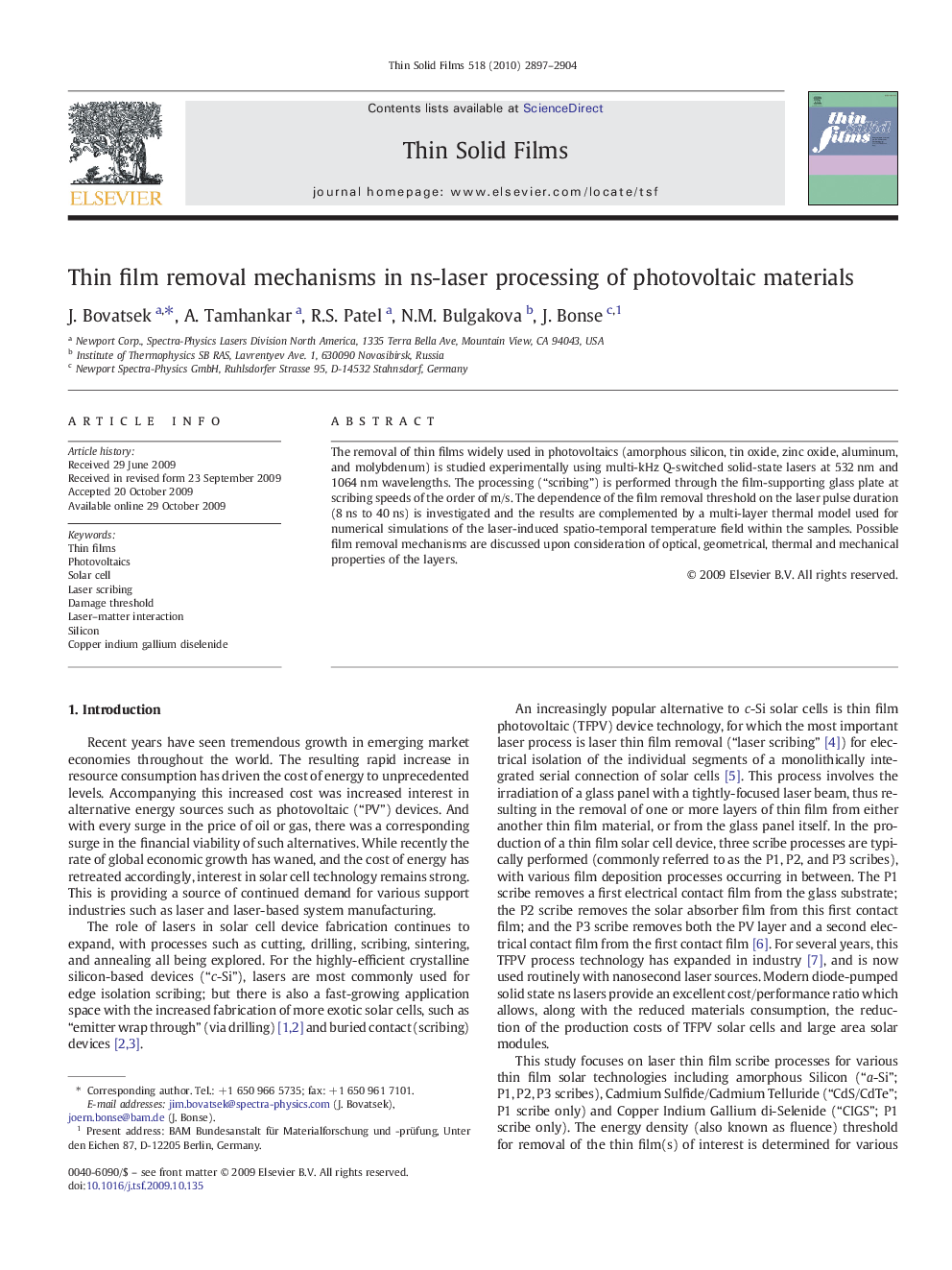| Article ID | Journal | Published Year | Pages | File Type |
|---|---|---|---|---|
| 1669714 | Thin Solid Films | 2010 | 8 Pages |
The removal of thin films widely used in photovoltaics (amorphous silicon, tin oxide, zinc oxide, aluminum, and molybdenum) is studied experimentally using multi-kHz Q-switched solid-state lasers at 532 nm and 1064 nm wavelengths. The processing (“scribing”) is performed through the film-supporting glass plate at scribing speeds of the order of m/s. The dependence of the film removal threshold on the laser pulse duration (8 ns to 40 ns) is investigated and the results are complemented by a multi-layer thermal model used for numerical simulations of the laser-induced spatio-temporal temperature field within the samples. Possible film removal mechanisms are discussed upon consideration of optical, geometrical, thermal and mechanical properties of the layers.
